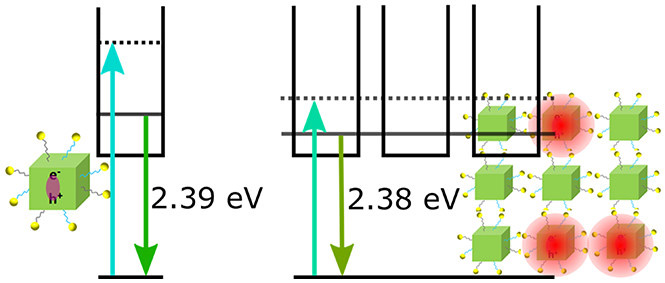Read our paper in ACS Applied Energy Materials
Assembled perovskite nanocrystals, known as supercrystals, can have many exotic optical and electronic properties different from the individual nanocrystals due to energy transfer and electronic coupling in the dense superstructures. We investigate the optical properties and ultrafast carrier dynamics of highly ordered SCs and the dispersed NCs by absorption, photoluminescence (PL), and femtosecond transient absorption (TA) spectroscopy to determine the influence of the assembly on the excitonic properties. Next to a red shift of absorption and PL peak with respect to the individual NCs, we identify signatures of the collective band-like states in the SCs. A smaller Stokes shift, decreased biexciton binding energy, and increased carrier cooling rates support the formation of delocalized states as a result of the coupling between the individual NC states. These results open perspectives for assembled perovskite NCs for application in optoelectronic devices, with design opportunities exceeding the level of NCs and bulk materials.
The principle is shown in the figure above and Fig. 1 below: the dense assembly of nanocrystals into supercrystals leads to new collective electronic states, minibands that show up as lower energies (red shift) in absorption and emission. We reveal the resulting states and carrier dynamics by transient absorption spectroscopy.

Fig. 1 Assembly principle and energy states
The individual nanocrystals (left) have discrete energy states that are quite a bit higher than the bulk material due to quantum confinement. After assembly into superstructures (right), new collective states emerge that are at lower energies (red-shifted).
